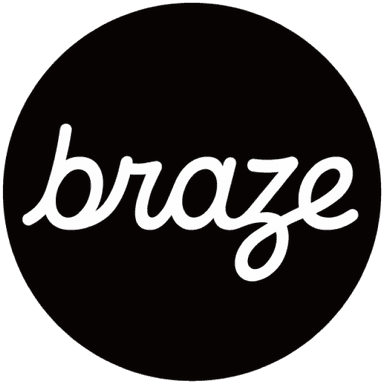Reach Viewers More Effectively with OTT Media Platform Messaging Strategies
Published on August 08, 2022/Last edited on August 08, 2022/6 min read


Cristian Munoz
Customer Success Intern, BrazeThe technology landscape is advancing quickly across a wide range of different digital platforms—and that means that the way your brand creates connections also needs to evolve. As over-the-top (OTT) media streaming platforms grow in popularity, finding ways to reach viewers via related messaging channels has become a key way to boost engagement and enrich the user experience with personalized content.
To help out, we'll dig into what OTT really is, essential messaging use cases to know about, and some key best practices that can help you make the most of your OTT engagement strategy.
What Is OTT Messaging?
OTT refers to technologies that layer on top of other proprietary information delivery systems. The term can refer to messaging platforms like WhatsApp and Facebook Messenger that allow users to communicate with friends, family, and others without using their mobile devices’ built-in text messaging capabilities. However, the term was originally used to describe digital media services and platforms that allow users to view movies, TV shows, and other content without the involvement of traditional media providers like TV networks and cable providers.
When we talk about OTT messaging in connection with OTT media platforms, we're looking at ways that brands can use these digital platforms to communicate with their users. Those communications can use various digital channels and take a lot of different forms, but ultimately the goal is to communicate with viewers in ways that add value for them and encourage them to build strong relationships with your brand.

Not every OTT media platform and connected TV has the same messaging channels available to it, so part of the work in building out a OTT media messaging strategy is understanding what tools you have at your disposal and figuring out how to use them effectively. What does that look like in practice? Imagine that you're trying to reach a user who has a smart TV—your brand could send a push notification to nudge them to check out a piece of content, or use an in-app message or a Content Card to highlight relevant content for them to watch next.
3 Key OTT Messaging Use Cases
There’s a wide range of use cases that brands can execute on in connection with OTT media platforms, but some are more common—and more impactful—than others. Let’s take a look at three key use cases that brands in this space can take advantage of to drive stronger results.
1. Provide Personalized Content Recommendations
For OTT media platforms, content is king—and finding ways to surface, recommend, and showcase content can be a powerful tool for driving deeper engagement among viewers. For Braze customers, one powerful way to make that happen is by leveraging our Connected Content dynamic personalization feature to customize the user experience and promote organic engagement based on data drawn from internal systems or public APIs.

What does that look like in practice? Well, a brand might use this to alert users when content relevant to their interests becomes available—for instance, a new season of a show they’ve watched or favorited, or a related movie title.
2. Drive Upsells and Add-On Services
For many streaming and media services, encouraging users to sign up for paid memberships or add-on services is a key source of revenue. With OTT media platform messaging, it’s possible to target users who perform high-value actions like watching a TV episode or movie and then use messaging to nudge viewers to complete a conversion event or KPI related to these sorts of upsells.

Some common conversion events for these kinds of messaging campaigns include activating seven-day trials or adding additional packages to their subscription. Brands can even map out these sorts of events into a coordinated journey using a campaign orchestration tool like Braze Canvas Flow; that makes it possible to adjust offers and experiences being served up to each individual user as they engage with the flow.
3. Gather Customer Insights and Zero-Party Data
Messaging doesn’t just have to be about nudging your users to watch a movie or make a purchase—it’s also a powerful tool for encouraging them to share their preferences and other key information with your brand. Marketers can use OTT media platform messaging channels to display questionnaires or other surveys, supporting direct customer feedback that can be used to improve the customer experience.

What might that look like in practice? Imagine using an in-product channel like in-app message or Content Cards to ask users to fill out a net promoter score (NPS) survey, and then creating personalized segments for brand loyalists and lapsed users, and reaching each with different targeted campaigns.
3 Best Practices for Making the Most of OTT Media Platform Messaging
Before you start building out your first OTT media platform messaging campaigns, there are a few useful tips you may want to keep in mind. Read on for three tips that can help you ensure you’re making the most of this kind of messaging.
- Adopt any recommended SDK and utilize your own UI for Web based platforms to maximize efficacy. For OTT media platforms that support in-app messaging, it’s important to ensure that your app can be configured to read the data model received by the relevant Braze SDK. This information contains the fields configured in the Braze dashboard (e.g. title, body, button text, colors), which your app can then read and display accordingly—and you can even use that data to customize the Braze native in-app messaging templates into your existing app designs.
- Personalize every notification tied back to Custom Attributes and Custom Events. It’s the rare streaming service or media brand that only sends messages directly through their OTT media platform. To ensure that your in-app message or other OTT channels aren’t being sent across—for instance—your mobile app or website, you’ll want to create a segment specific to your OTT media platform app. It’s also possible to use Connected Content and Liquid personalization to add in relevant information to OTT media platform messages on a per-user level, supporting a better, more tailored experience.
- Be very intentional about the messages you send on these channels. While it’s important to be mindful of how much—and when—you message users on any platform, it’s especially true on OTT media platforms; users aren’t used to receiving messages through these platforms, so sending an excessive number of messages could be particularly alienating to recipients. Be really thoughtful about when to use these channels, rather than email or mobile channels, and make sure you’re adding value with every message.
Final Thoughts
Interested in getting started with OTT media platform messaging? Read our look at Braze Connected TV support and messaging for more information about how to use Braze to understand, reach, and engage viewers across a range of digital media platforms.
Related Tags
Be Absolutely Engaging.™
Sign up for regular updates from Braze.
Related Content
View the Blog
Move up the personalization spectrum: Introducing RCS, Banners, and Canvas Context

Haley Trost

SMS marketing strategy done right: Key steps and real-world examples

Team Braze

Rich, Compelling, Trusted: Introducing native Braze support for RCS
